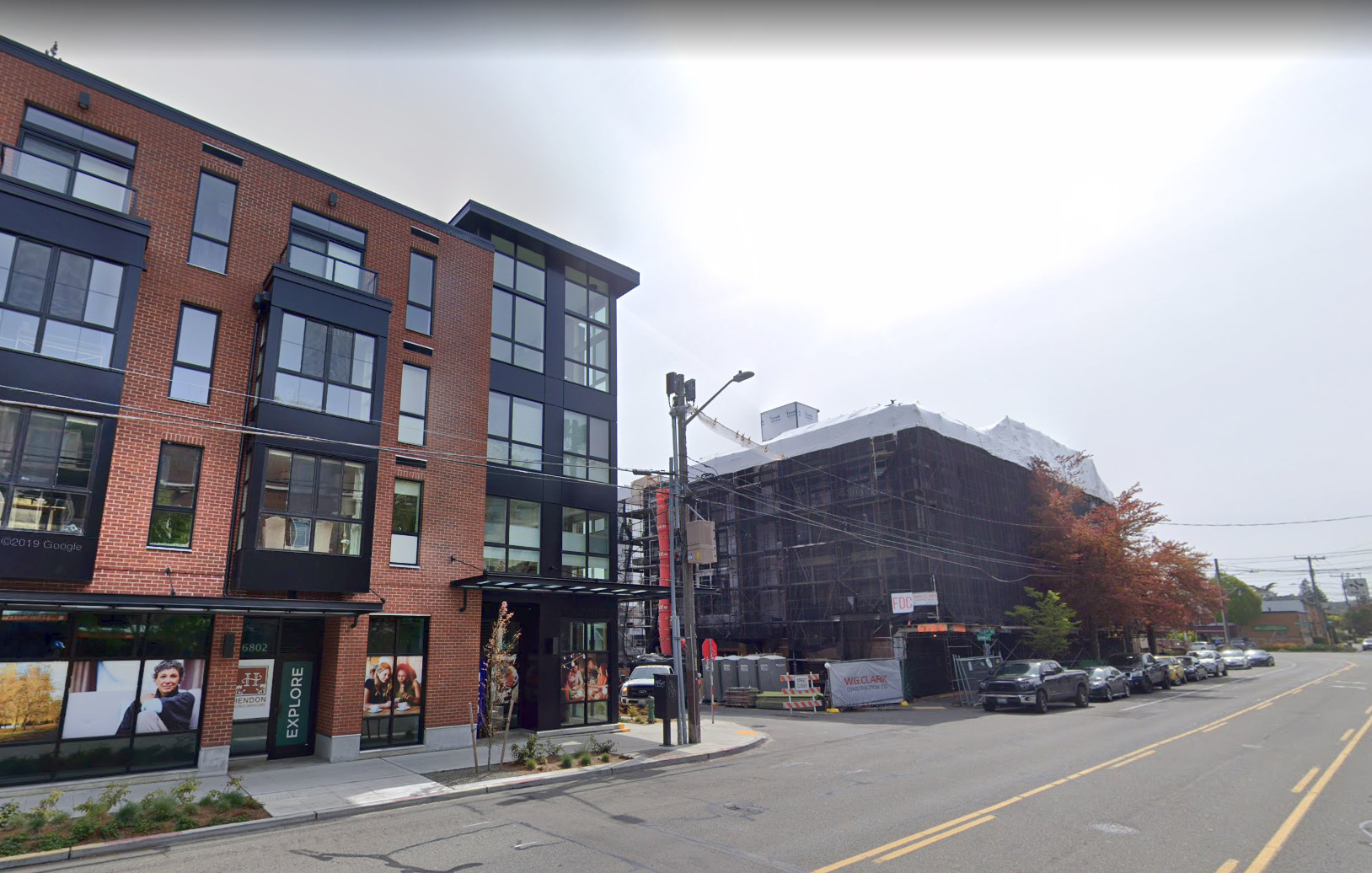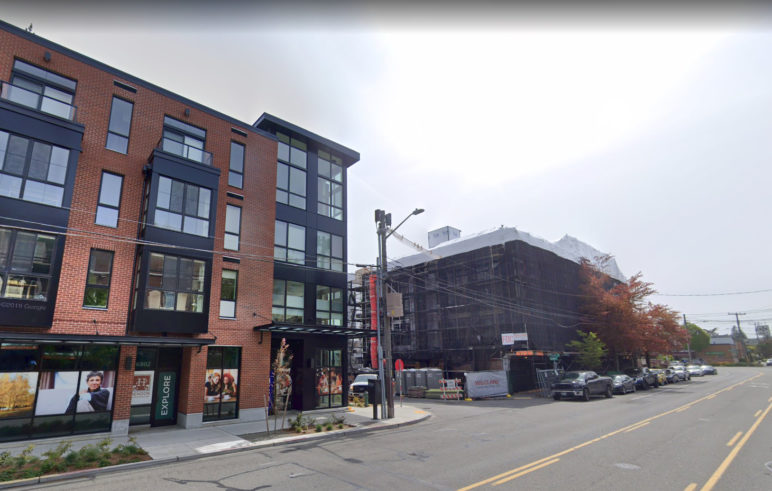A who’s-who of Seattle environmental non-profits—350 Seattle, Sierra Club, Climate Solutions, Futurewise, Transportation Choices Coalition, and Sightline—all backed the city council’s recent 8-0 vote to limit environmental review of homebuilding and the rules that govern it.
Why would groups with the mission of creating a sustainable future want to rein in environmental oversight?
Call it: environmentalists against environmental regulations that can hurt the environment.
On paper, the policy tweaks Seattle just adopted are modest wins for housing abundance. But in the big picture, the unanimous vote reflects a sea change in environmentalist thinking—a shift away from the once widely held belief that cities are an environmental scourge, and toward the contemporary understanding that cities are an essential environmental solution.
Adding homes to cities like Seattle not only helps protect farms and forests from sprawl, but also cuts climate pollution—because in compact communities people drive less and their homes use less energy.

And that solution hinges on housing. Adding homes to cities like Seattle not only helps protect farms and forests from sprawl, but also cuts climate pollution—because in compact communities people drive less and their homes use less energy.
As Sierra Club Seattle Group Chair Brittney Bush Bollay put it, “one of the most important things we can do for the environment is to make it easier for people to live near where they work and play.”
Washington’s State Environmental Policy Act (SEPA) mandates environmental review of individual homebuilding projects, as well as changes to zoning laws that increase the number of homes that can be built. Enter Seattle’s anti-housing activists who obstruct both, hijacking the SEPA review process to stonewall the construction of new homes—that is, who abuse environmental laws to cause net harm to the environment.
See my litany of Seattle SEPA abuses here. Flawed passages in a state code section that happens to include the word “environmental” have let anti-change activists greenwash their efforts to block everything from housing for formerly homeless seniors to one of the greenest office buildings in the world. The latest gem: a legal appeal to stop the creation of tiny house villages for homeless people.
Taken as a whole, SEPA is an indispensable set of laws for a wide range of vital environmental protections. Sightline has leveraged SEPA’s review and public process to help kill harmful fossil fuel infrastructure projects, like a giant coal terminal at Longview and an oil-by-rail terminal at Anacortes.
But SEPA, conceived in the era of white flight and smog-spewing gas guzzlers, has not kept up with the ecological imperative to welcome more people to cities. For example, SEPA is set up to penalize an apartment building for providing too little parking, but to ignore how putting homes near jobs lowers driving overall.
Worse, under SEPA rules, anyone who doesn’t like a development or zoning change that would bring more homes to the city can file an appeal—groundless or not—halting progress for months or even years.
The editorial board of Seattle’s big daily warned that the environmental community is getting duped by the “faux environmentalism” of SEPA reform.
Seattle city council’s unanimous vote and the broad environmentalist support attest to a different reality. Fresh off sharing the stage with author Naomi Klein to discuss Klein’s new climate change book On Fire, Councilmember Teresa Mosqueda summed it up: “We have to be a welcoming city… we have to build density… [SEPA reform] is an environmental justice policy.”
Seattle’s SEPA reform merely takes advantage of state laws intended to stop SEPA abuse
Seattle isn’t going rogue on SEPA reform. All the new ordinance does is allow Seattle to apply SEPA fixes that the state already adopted.
Recognizing SEPA’s potential to backfire on urban homebuilding a decade ago, Washington lawmakers legislated several options to limit the damage. In 2012, Seattle took advantage, raising the size threshold that triggers mandatory environmental review of housing developments from the default 20 units to 200 units, though only in the city’s designated urban centers and villages. In 2015, a technicality forced the city to temporarily revert to 20 units. The bill Seattle just passed brings the threshold back up to 200—it’s nothing new.
To further ward off SEPA abuse, Seattle could expand the exemption to cover the whole city and raise it higher than 200 units. The catch? The city would have to conduct SEPA review of any such proposed changes!
Which brings me to the next piece of Seattle’s SEPA reform bill. Earlier this year, Washington adopted legislation (HB 1923) that grants a safe harbor from SEPA appeals on a select list of policy actions cities and counties can take to encourage more housing—mostly various flavors of fairer, greener zoning. To access the SEPA appeal protection, local governments have to “check the box” to align their codes with the state’s.
If Seattle had the HB 1923 box to check before proposing changes to rules for accessory dwellings in 2015, anti-housing activists could not have filed their appeals that delayed the reforms for three years.
HB 1923 also shields raising SEPA review thresholds for multifamily homebuilding. If, as I suggest above, Seattle opts to boost thresholds further, the city’s SEPA review of the proposal cannot be appealed.
Lastly, the new Seattle ordinance checks another box to enable an older state law designed to curtail redundant SEPA review. That law says if a city has adopted a comprehensive plan that was subjected to environmental review under SEPA, then subsequent changes to city regulations consistent with that plan are exempt from review.
No Washington city that I’m aware of has utilized this exemption, but the potential seems huge. Could a proposal to ban off-street parking quotas, for example, qualify for exemption from SEPA review in a city with a comprehensive plan that calls for a shift away from cars? Perhaps even Seattle’s recent affordable housing upzones, delayed for over a year by a SEPA appeal, could have been exempt.
Compact communities are good for the planet, so let’s make it easier to build more of them
All told, Seattle took a few solid but small steps toward keeping Washington’s signature environmental law from being abused to sabotage housing options.
The bigger story is the solidifying consensus among environmental leaders and elected officials on the far-reaching environmental benefits of opening up the city to more residents; and the consequent recognition that even regulations originally intended to protect the environment can end up doing more harm than good if they thwart homebuilding in growing cities like Seattle.
There’s much more to be done, though. As I wrote previously, “to work for cities, SEPA ultimately needs major surgery at the state level.” The core flaw in SEPA analyses is that only negative impacts count. In other words, SEPA says: who cares if adding homes lowers carbon emissions and curbs sprawl. It’s things like shadows, view loss, and parking we need worry about most.
To put a finer point on it: today, regulations for environmental assessment that don’t prioritize climate action are garbage. The long but necessary battle to fix SEPA has barely begun.
Endnote
One recent SEPA appeal turned the usual story on its head, acting to delay policy that would work against housing abundance. Attorneys representing developer interests appealed Seattle’s SEPA review of its proposal to impose new impact fees on residential and commercial construction. The appellants argued that the review didn’t account for adverse environmental impacts caused by impact fees driving up the cost of housing—a valid argument! The appeal was upheld on a technicality, so will likely only delay the city from its misguided march toward impact fees on new homes.












ballardite
There should be impact fees on new homes. Now the City is allowing new homes to be larger – take up a larger percentage of the lot – if they provide a rain garden. This is because the larger building will allow less natural drainage. But I find it hard to believe that the rain gardens actually offset all the sewer drainage that is required for the number of units developers are building on all the upzoned lots. And the City know that they need sewer updates and are increasing utility rates to pay for them. This is not how large capital projects like sewer system replacements should be paid for. They should be paid in a way that once the system replacements are paid off the charges should end.
M
We are in a housing crisis. What is the impact fee paying for?
Christine
What about open green space (aka parks, P-patches, off lease dog areas)? We’ve crammed so many people into West Seattle that the quality of life is diminishing for both the newbies and the long term residents.
Jonathan
I’ve owned a home in West Seattle for 10 years. It’s better here that it was when we arrived.
ballardite
The Phinney apartment you show in the foto will bring alot of cars to that neighborhood – I guarantee it. I hope the activists that were arguing for adding parking to this development keep tabs on the increase in cars parking on the streets once it gets completed. The whole world is heading towards electric vehicles, but with no garages in all these new buildings there will be no way to install charging stations once the electric vehicles become the norm. What will we do then?
BK
“The whole world is heading towards electric vehicles, but with no garages in all these new buildings there will be no way to install charging stations once the electric vehicles become the norm. What will we do then?”
Something called an Electriduct (you’ll get their website if you Google it) is a code-compliant way to put a ramped metal cover over electrical wires as they cross a sidewalk. I’ve seen them powering construction trailers parked curbside. (Sightline’s comment section doesn’t allow pictures or I’d post one).
RDPence
But Electriduct only works if you can park right in front of your house, but the City allows anyone to park there. And you can’t very well run a charging cord from your apartment to your electric car, no matter where it’s parked. Maybe it’s time to tweak the war on cars.
djw
People who want to own cars, electric or otherwise, will continue to have three choices:
a) pay for their own damn car storage
b) compete for the free/subsidized car storage
c) decide that car storage is sufficiently inconvenient such that car ownership
The vast majority of all types of housing comes with car storage attached, so (a) shouldn’t be too bad–if having car storage adjacent to your home is important to you, simply choose one of the ~90%+ housing options that have it. If that would mean you need to move to a slightly less desirable or walkable location, that’s a choice you can make. Similarly, even in parking-scarce neighborhoods it’s rare one can’t find a location to store your car with in 2-5 blocks of your home, a length transit riders walk to stops every day. If that’s too far to walk, you’ve always got options (a) and (c).
All in all, these are three fine options. The idea that it makes sense to drive up the cost and drive down the supply of housing just so people won’t be forced to make any of the mild trade-offs associated with those options seems absurd to me. It should be legal for people to have the option of buying a home without paying for car storage if they want to, and “it might make incumbent car owners’ subsidized car storage slightly less convenient” seems nowhere near a reasonable justification to outlaw car-free homes.
Chuck Sundsmo
Do you want to “own” a car or do you just want transportation to your desired destination? The not too distant future is autonomous cars on call. When I go to Seattle, or any large city, I leave my car at the hotel and use uber. In most of Europe no need for a car public transit is great. No one living in a city will need to “own” a car. What about the BILLIONS we are putting into RTA?